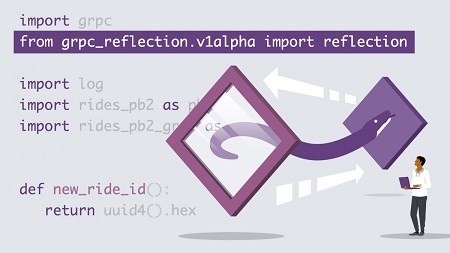English | MP4 | AVC 1280×720 | AAC 44KHz 2ch | 0h 41m | 136 MB
gRPC allows clients and server applications to communicate more efficiently on a connected system. Knowing how to use gRPC can come in handy if you’re programming in a language like Python. In this course designed uniquely for Python developers, instructor Miki Tebeka shows you the essentials of gRPC so you can get started with this easy-to-use tool.
Get a brief introduction to gRPC and the working parts of its ecosystem: protocol buffers, HTTP/2-based transport, .proto files, enumerations, nested types, and JSON encoding. Learn how to run the gRPC server, create a gRPC client, define a streaming end point to send data to the client, and handle streaming responses from the server. Along the way, Miki gives you tips on using tools like interceptors and gRPC Gateway.
Table of Contents
Introduction
1 Why gRPC
2 What you should know
3 Setting up
gRPC Overview
4 RPC in general
5 Protocol buffers
6 HTTP 2
7 gRPC ecosystem
Protocol Buffers
8 Writing .proto files
9 Compiling .proto to Python
10 Using generated code
11 Enumerations
12 Nested types
13 Working with time
14 JSON encoding
gRPC Server
15 Defining the service
16 Generating Python code
17 Running the server
18 Adding reflection
19 Using grpcurl to call your server
20 Setting errors
gRPC Client
21 Creating a client
22 Generating a request
23 Calling the server
24 Timeouts
Streaming
25 Streaming overview
26 Defining a streaming end point
27 Streaming server handler
28 Streaming client
Advanced Topics
29 Writing interceptors
30 Using HTTPS
31 Sharing .proto definitions
32 Testing your code
33 Using gRPC-Gateway
Conclusion
34 Next steps
Resolve the captcha to access the links!
